Tamiya 1/48 T-34/76F
From December 2005, my first armor kit in nearly mumblemumble years, isn't that a long time?
History:
German Field Marshal Von Kleist said, "Their T-34 was the best in the world." The T-34 tank is legendary as the armored fighting vehicle that won The Great Patriotic War for the Soviet Union.
In 1931, the Soviet Union purchased two American Christie tanks, which were at the time the most innovative in the world and too advanced for the U.S. Army to get involved with. The main technological advance of the Christie design was the suspension system, which allowed the vehicle to operate at higher speeds over more difficult terrain than the various AFV suspension systems then in use. This Christie suspension system was incorporated in what became the T-34, and was the most important item in creating the superior fighting vehicle the T-34 was.
The T-34 was developed in the Kharkiv Tractor Factory in the Ukraine during 1936-37, as a technologically innovative design that addressed the short-comings of the earlier BT series of wheel/track tanks. These were light tanks designed for very high speed - 53 mph with tracks, and over 60mph in good roads without tracks! - and long range. While these features made a formidable weapon for fast advances deep in enemy territory, the BTs lacked firepower and armor and were not suitable as main battle tanks.
The prototype - now designated the T-34, was built in early 1939, was tested by successfully driving it 1,000 miles from Kharkiv to Moscow and back. It was put into production in September 1940. The Model 1940 carried the L-11 76.2mm gun, which was shorter than the subsequent 76.2mm main gun of the 1941 and later models. 1,225 T-34s had been produced at the Kharkov Steam-Engine Factory by the time of the German invasion on June 22,
Besides the suspension, the T-34's main advantage was its simple design, which made it easy to mass produce and repair. By the middle of the war, with mass production in the Urals factories, a T-34 could be produced in just 40 man hours. Compared to contemporary medium tanks, the T-34 was smaller and comparably lighter at only 26 tons, while the water-cooled diesel engine minimized the danger of fire and increased the radius of action to 115 miles.
The design evolved throughout the war: the T-34/76B was equipped with a rolled-plate turret, while the T-34/76C had twin roof hatches instead of the one large hatch, and the T-34/76D introduced a hexagonal turret, with a wider gun mantlet and jettisonable exterior fuel tanks. The T-34/76E had a cupola on the turret for the commander and all-welded construction, and the T-34/76F was equipped with a cast-steel rather than welded-steel turret.
The T-34 first saw action in a series of border battles between Russian and Japanese forces on the Manchurian border in March 1941. The Japanese reported the outstanding performance of the T-34, but these reports were ignored by the Wehrmacht.
When the German panzers first met the T-34 in combat, it proved to be a nasty surprise, since it had a more powerful high velocity cannon that placed more emphasis on tank killing ability than did the German Pzkw IV which was the heaviest German AFV at the time, and a higher top speed - 32 mph versus 25 mph. Additionally, its sloped armor and welded construction was superior to its opponent, while its extra-wide tracks improved cross-country mobility in the great battles on the Russian steppes. The T-34 was so superior to what the Germans had that an emergency program was put in place to create a tank that could counter it, which resulted in the Pzkw V, known as the Panther and the Pzkw VI, the Tiger. During the design competition that resulted in the Panther, one other suggestion was the production of a direct German copy of the T-34.
After the introduction of the Tiger I - which debuted in the greatest tank battle in history, the Battle of Kursk and whose 88mm cannon outranged the T-34's 76mm cannon - the T-34 was upgunned during the winter of 1943-44 with the turret of the KV-85 tank which used an 85-mm main gun. The T-34/85 also had a fourth crew member so the commander did not also have to fire the cannon. Although even the T-34/85 was not the equal of the Panther and Tiger tanks, the fact T-34s outnumbered their opponents by at least 10:1 more than compensated for any technological shortcomings. It was still faster and more maneuverable than either German tank - the Tiger was so heavy it frequently bogged down on soft ground and could not use many of the smaller bridges found throughout western Russia, while the T-34 was entirely unaffected.
The T-34, equipped with hand bars welded to the hull, was the first tank designed to carry infantry into battle, which was a tactic that brought real changes to the battlefield, since the infantry could ambush enemy tanks that didn't expect their presence.
Following the Second World War, the T-34 was widely exported and saw action in nearly every war fought between 1945 and 1995, when it was used during the Bosnian civil war. T-34s can still be found in some armies in Africa, making it likely the most widely-used and longest-serving tank in history.
The Kit:
The T-34/76 Model 1941 is the first of the new Tamiya line of 1/48 armor, which now cover the German Pzkw IV and the Panther with their latest releases.
The kits all have a metal lower hull. They do not feature internal detail, though a modeler who wanted to open them up could do so with a bit of scratchbuilding. Both the turret hatch and the driver's hatch on the T-34 are separate, so they could be posed open.
The rest of the parts are very cleanly-molded injection plastic, and a lot of thought went into the production design, since they are very simple to construct. The tracks are composed of several sections of different lengths, as well as individual links to go around the driver and idler wheels.
The kit represents the T-34/76F, with a very well-molded cast steel turret that represents the rough surface quite accurately.
Construction:
HLJ sent me this kit when it was first released, hoping to entice me to build it and report on it, to show other modelers who don't do armor how easy the kit is to turn into a nice model. While I did build armor way back in the early Cretaceous of my youth, and enjoyed them (the old Aurora 1/48 Panther and J.S.III, the Revell Long Tom and Weasel, etc.), I haven't built a “creepie-crawlie” in a good long time years that I can recall. The kit got here just before the move to the new Le Chateau du Chat, then was lost in a box in the garage for a few months, during which I read Scott's reviews of the other releases and got curious.
After realizing with the Hasegawa and Tamiya Fw-190 project that it is indeed true that a man can build 1/48 Fw-190s to the point of extreme satiation, I found the box the T-34 was in while pulling Christmas ornament boxes out of the garage, and decided to give it a try.
It's really true, what Obi-wan Kenobe said to Luke Skywalker: “the dark side is easier.” By that, I do not mean any put-down of AFV models, but I was reminded during this project of the comment by a very good AFV and figure modeler I know, who said he would never do an airplane because there are too many ways to screw up the final result without being able to hide them, while nearly any mistake on a tank can be hidden by turning it into the proverbial “pig in sh*t” during the finishing stage.
The kit is quite simple to construct, and the only problem I had was that the handles are so small and delicate that I managed to break every one of them merely through handling the upper hull while painting it, forcing me to repair each and replace one with stretched sprue. Fit is excellent and I used no putty or Mr. Surfacer throughout the project.
Painting and Markings:
With the model in sub-assemblies of turret, upper hull, lower hull and all suspension parts still on the sprues, I first painted the entire thing green. I used Xtracrylix RLM62 Green, which seems “close enough” to “Russian Tank Green,” which I seriously doubt was any one particular shade any more than PC10 or RLM02 are. I also painted the treads with ModelMaster “Magnesium.”
When all that was dry, I gave everything a coat of thinned Tamiya “Smoke” to pop out detail. I followed that with several good “glops” of thinned Tamiya “Red Brown” over the suspension, the wheels, the lower sides of the hull, to simulate mud. When that was dry, I gave these parts a coat of Xtracrylix Satin varnish, because I wanted the mud to look wet.
The upper hull and turret were given a “winter wash” of thinned Xtracrylix “White.” I then airbrushed on some thinned Tamiya “Red Brown” and also dry-brushed that color to simulate mud splashes. I finished all that off with a coat of Xtracrylix Flat varnish.
Final Construction:
Final construction involved assembling and attaching all the wheels, followed by attachment of the tread. The treads Tamiya designed for this work very easily, and the final result looks very realistic to me - certainly far more so than the rubber treads I remember fiddling with as a kid.
I decided not to attach the extra treads and towing wires and ammo boxes, opting instead for the “cleaner” look a tank would be in as it headed into battle. I think of this tank as being one of those that fought in the marshes and forests west of Moscow during the Winter Offensive of 1941-42, when the Nazis first started to realize they weren't the “master race” after all.
Conclusions:
This is an easy kit for someone who has never done armor - or hasn't done any in a very long time - to build and end up with a good-looking model that encourages them to do more. In my case, the Pzkw IV and the Panther of this series are already winging their way across the Pacific, and I am sure I won't let those boxes get lost in the garage once they arrive. Highly recommended for those thinking of going to “the dark side.”
(Interestingly enough, the new T-34/85 has somehow mysteriously showed up here, thoroughly remarkable, since I can resist everything but temptation, so a dive back into the "dark side" will be forthcoming. Then there's those half-completed tanks I found in the mislabeled box last month... )
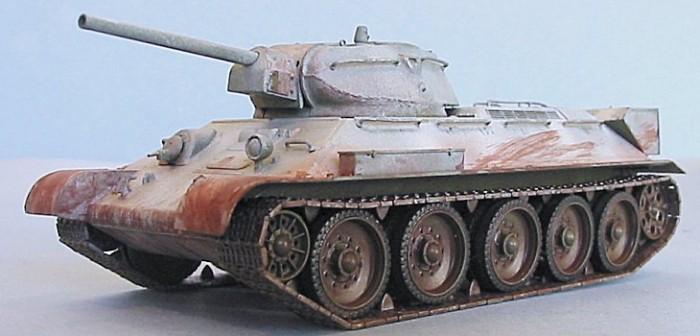
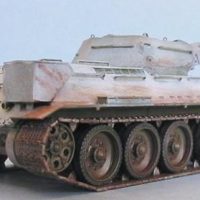
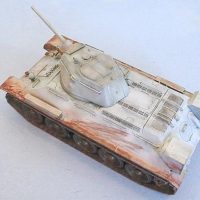

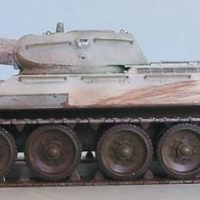
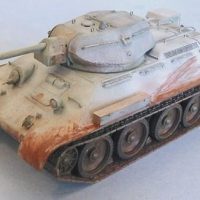

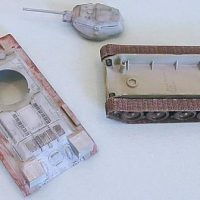
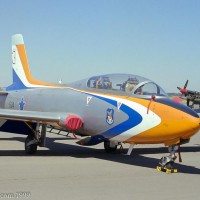
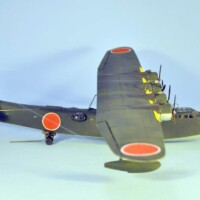
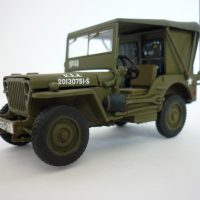
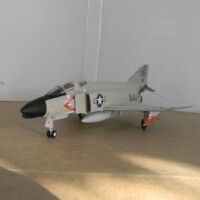
Love it, Tom.
I enjoyed reading the T-34 story a lot!
Awesome looking brute. Nice work.
You can’t go wrong with a T-34, Tom!
Classic tank and build !
I saw a video a few years ago of some guys driving across Russia and filming all the T-34 wrecks that died is situ and become shrines or memorials of sorts.
Great numbers of them. I wonder if they all got removed for the metal by now .That alone would be daunting to recover heavy machines like this.
Seeing some of these out West would be nice and be different than all the inaccurately represented Patton tanks that are parked outside many WW2 museums.